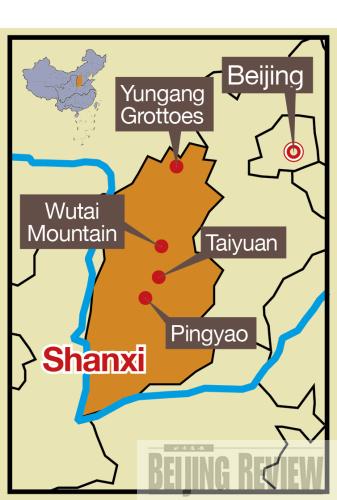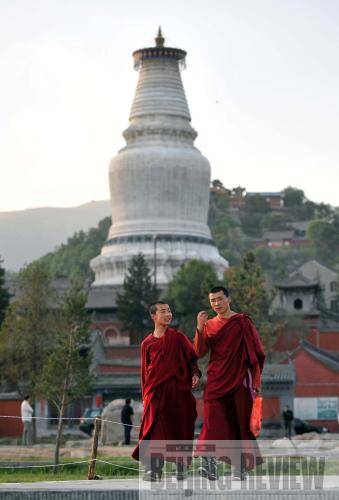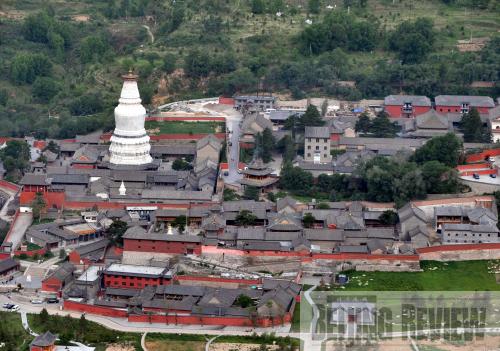|
Emei Mountain is in southwest China's Sichuan Province and is where China's first Buddhist temple was built in the first century. The patron bodhisattva of Emei is Samantabhadra, known in Chinese as Pu Xian. The Emei Mountain is also famous as one of the sources of Chinese martial arts, which flourished in the 16th and 17th centuries. The mountain was included on the World Heritage List in 1996.
Putuo Mountain, located in east China's Zhejiang Province, is the place where rites are held for the revered Avalokitesvara Bodhisattva, known as Guan Yin in Chinese. Religious activities at Putuo Mountain can be traced back to the Qin Dynasty (221-206 B.C.), when many Taoists searched for pills that imparted immortality.
Shanxi Province
North China's Shanxi Province, whose name means "the west of the mountain," has a population of more than 34 million. Shanxi's center is dotted with a series of valleys, while the Yellow River runs through the province from north to south and the Taihang Mountains create its eastern border. The Great Wall forms most of its northern boundary with Inner Mongolia Autonomous Region.
It is a leading coal producer in the country, with deposits containing 260 billion metric tons of the fossil fuel.
There are two other sites in the province included in the World Heritage List in addition to Wutai Mountain:
The ancient city of Pingyao has been included in the World Heritage List since 1997. Located near Taiyuan, it was once an important Chinese financial center in the Ming (1368-1644) and Qing (1644-1911) dynasties.
The Yungang Grottoes in the north of the province have been listed as a world heritage site since 2001. The grottoes, located in Datong, consist of 252 caves that contain 5th- and 6th-century Buddhist sculptures and reliefs.

 |
|
PIOUS PRACTICES: Around 2,000 Buddhist monks call Wutai Mountain home |
 |
|
BUDDHIST WORLD: Wutai Mountain is seen as a museum of Buddhist architecture |
| 